|
|
| home | features | exhibitions | interviews | profiles | webprojects | gazetteer | links | archive | forum |
|
The Launching of the Pier Arts Centre Margaret Gardiner
Abridged version of an essay written in 1988 by Margaret Gardiner (1904 - 2005) for the occasion of the ten year anniversary of the opening of the Pier Arts Centre, Orkney. Margaret Gardiner was a supporter of many artists associated with St Ives and was a particular friend of Barbara Hepworth and Ben Nicholson, having known them in Hampstead. The author of several books including a biography of Barbara Hepworth, she left her collection of their work to the island of Orkney where it is now on permanent display.
We arrived in Kirkwall to one of the most spectacular sunsets that I have ever seen, the whole sky ablaze, a fiery red. 'I'll be taking you back the night' said Tom Sinclair, who was ferrying us over. 'There's nowhere there for you to stay.' But we were determined to confound him and as we trudged along the eastern coast road we stopped at each of the rare houses to ask could they put us up for the night. We were offered tea and bannocks and fresh baked cakes and friendly talk but no beds until we were near capitulating and returning to Tom when the folk at Langskaill - the Dickeys - took pity on us. One day, walking up the Leean and past the quarry, Martin pointed to a cottage, standing alone, no road to it, on a flat, green field below the brae. 'That looks empty' Martin said. 'If it is, let's buy it.' Crazy, I thought, a crazy idea. How could we ever come this far again? But Orkney already had both of us in thrall - and the cottage proved to have been empty for seven years and we bought it.
Barbara and Ben were having a real struggle to keep going – particularly after their triplet children were born - and they had to augment the rare sales of their essential work by designing textiles and rugs, printing strips of cloth with lino cuts and by any other ploys they could devise. So it was that whenever things began to look desperate for them and if I could do so, I would buy a carving or a painting. That was how, piecemeal and without deliberation, my collection came into being.
Now I must make another time jump and move on till well after the day when Martin and I first landed on Orkney. Martin was again the trigger. 'What are you going to do with all this stuff?' he asked. 'I don't think that I shall ever want to live in a house full of valuable works of art.' 'Oh well,' I said, without pausing to consider, 'I'll give it to Orkney'. It seemed to me then quite simple- merely a matter of a new clause in my will. But it didn't turn out like that, for when I spoke to my Orkney friends about the possibility they took it up with enthusiasm, wanted it to be extended from just a gallery to an arts centre and to be set up straight away. At about the same time my friend, that excellent artist Sylvia Wishart, who owned the warehouse on a little pier in Stromness, told me that she wanted to leave it and move further outside the town. The other half of the pier and the adjoining house in Victoria Street was a youth hostel and it seemed to me that if only it were possible to buy both warehouse and hostel they, and the pier itself, would make a most exciting arts centre.
The next three years have become in my mind a confusion of elation and despair, of unexpected successes and discouraging failures. I pestered everybody, I wrote to more than a hundred trusts, businesses and individuals for financial help, I persuaded the television programme 'Afternoon Plus' to do a piece about the project, I created a trust and appointed trustees. And from time to time there was a major breakthrough. One of these was when a friend brought Sandy Dunbar, the Director of the Scottish Arts Council I to see me. Sandy looked at the paintings and sculptures and talked with me about the plans for the Centre. Then, smiling, he said 'We'll help you as much as we possibly can.' Which is, indeed, what the SAC have done ever since. Again, when I approached Occidental Oil, some of their directors came to see me and there and then agreed that they wished to make us a grant. This has been, and is, one of our mainstays. Among their number was Alastair Dunnett, who became a trustee and whose friendship, generosity and good advice has been a constant encouragement. I think, too, that it was his advocacy that led to the tremendous boost given to the project when Dr Armand Hammer presented us with fifty thousand pounds towards the buying of the buildings.
But now there were new problems - the repair and conversion of the buildings, the appointment of a curator, decisions about management and the practical running of the place. Chance took a hand again when Patrick Heron, a painter friend from St Ives, said 'You ought to discuss the conversion with my architect daughter, Katherine. Conversions interest her.' So I talked to Kate, whom I hadn't seen since she was a child, and she told me firmly 'I'm going to do this job.'
The 14th of July, 1979 was a brilliant, sparkling day and the pier was abuzz with visitors. As the boat carrying Lord Balfour of Burleigh, the Chairman of the Scottish Arts Council, his wife and my son Martin, with John Stout, upright and resplendent in his Lighthouse Board uniform, rounded the pierhead, the thirteen fiddlers by the steps started to play. A green ribbon had been fastened across the gallery door, and as he approached it Lord Balfour was handed some shears. 'Now cut the painter' I commanded in my best nautical manner. 'Very appropriate for an art gallery' remarked Lord Balfour with a twinkle as he snipped the ribbon. And the Pier Arts Centre was launched'. |
|
|

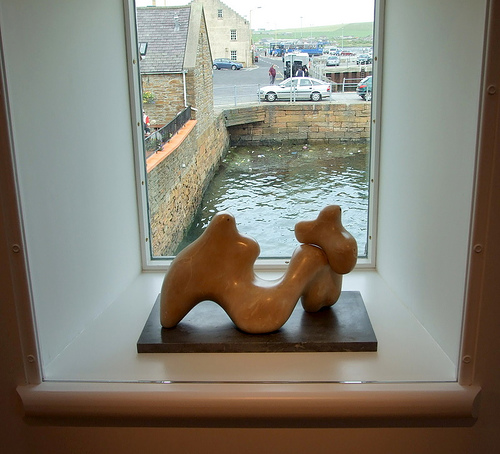 'It
began, I suppose, in 1956 when my son Martin decided that he wanted to
take his National Service leave in Orkney and asked me to go with him.
Orkney? I thought vaguely, where exactly is Orkney? For at that time
Orkney did not exist for southerners in the vivid way that it does
today.
'It
began, I suppose, in 1956 when my son Martin decided that he wanted to
take his National Service leave in Orkney and asked me to go with him.
Orkney? I thought vaguely, where exactly is Orkney? For at that time
Orkney did not exist for southerners in the vivid way that it does
today.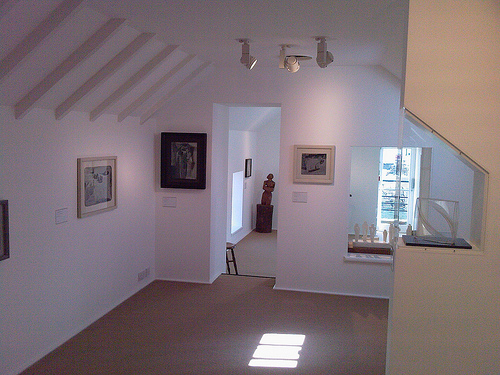 I must now go back in time and place to
London in the thirties, when I first met Barbara Hepworth. An immediate
friendship sprang up between us and before long I had met Ben Nicholson
and other of her artist friends, among them Henry Moore, Naum Gabo,
Alexander Calder and the poet a critic, Herbert Read. At that time none
of them were generally well-known outside art circles although they did
not conform to the romantic stereotype of artists starving in garrets,
they were certainly not well off. But they were sustained by a
pioneering spirit, a sense of discovery, a deep belief in the importance
of art and its place in society. Art mattered.
I must now go back in time and place to
London in the thirties, when I first met Barbara Hepworth. An immediate
friendship sprang up between us and before long I had met Ben Nicholson
and other of her artist friends, among them Henry Moore, Naum Gabo,
Alexander Calder and the poet a critic, Herbert Read. At that time none
of them were generally well-known outside art circles although they did
not conform to the romantic stereotype of artists starving in garrets,
they were certainly not well off. But they were sustained by a
pioneering spirit, a sense of discovery, a deep belief in the importance
of art and its place in society. Art mattered.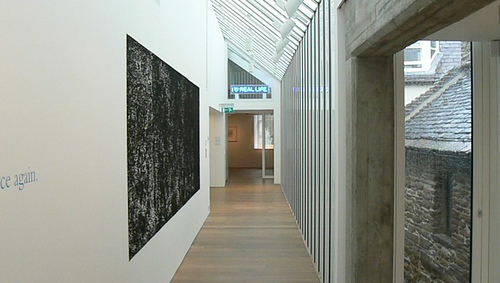 In
later years, when they had become well-known and were no longer
struggling, both Barbara and Ben were generous in giving me works. Also,
from time to time, when they had moved to St Ives, I bought from younger
artists whom I met there. This gave the growing collection a certain
consistency and is one of the reasons why I think that it should remain
as a whole and not be dispersed. For it exemplifies a significant phase
in the history of modern art.
In
later years, when they had become well-known and were no longer
struggling, both Barbara and Ben were generous in giving me works. Also,
from time to time, when they had moved to St Ives, I bought from younger
artists whom I met there. This gave the growing collection a certain
consistency and is one of the reasons why I think that it should remain
as a whole and not be dispersed. For it exemplifies a significant phase
in the history of modern art.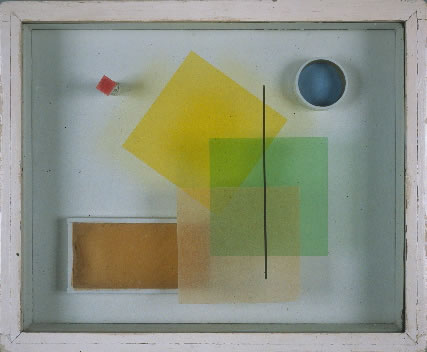
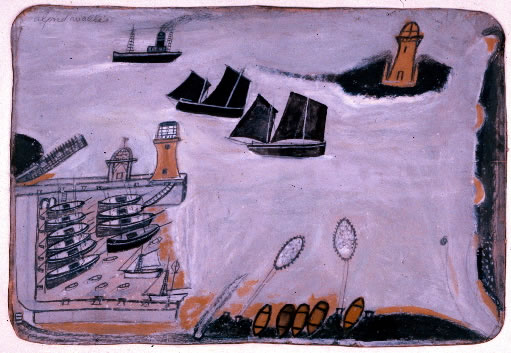 There
were dark days too, when it seemed that we would never achieve our
objective and I was forced to consider alternative sites, none of which
had the enchantment of the Pier. But at last, at long last, the way
ahead was clear: it was really going to happen. Then, almost as though
by chance, a new possibility was opened. 'You know' Sir Norman Reid, the
Director of the Tate Gallery said to me in a rather offhand way one day,
'I'd very much like to show your collection in the Tate before it goes
up north.' An exhibition in the Tate! An unbelievable opportunity and
one that led, in turn, to showings in Aberdeen, Dundee, Glasgow and
Edinburgh - a right royal progress to Stromness.
There
were dark days too, when it seemed that we would never achieve our
objective and I was forced to consider alternative sites, none of which
had the enchantment of the Pier. But at last, at long last, the way
ahead was clear: it was really going to happen. Then, almost as though
by chance, a new possibility was opened. 'You know' Sir Norman Reid, the
Director of the Tate Gallery said to me in a rather offhand way one day,
'I'd very much like to show your collection in the Tate before it goes
up north.' An exhibition in the Tate! An unbelievable opportunity and
one that led, in turn, to showings in Aberdeen, Dundee, Glasgow and
Edinburgh - a right royal progress to Stromness.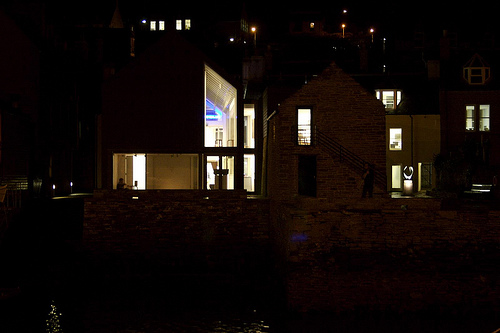 There
were, of course, the inevitable setbacks and delays. The fire
authorities, pontificating from Inverness, insisted on a second
staircase: light fittings of the type we wanted were unobtainable in the
colour we wanted; the cement between the floor tiles oozed out and
spread a dingy smear that no scrubbings would banish. It seemed
unending, but it ended; the buildings were renewed and beautiful inside
and out, the crated works arrived from Edinburgh and Erlend Brown, Kate
and I spent a couple of days hanging them, finding exactly the right
position for each. Erlend, chosen by the Trustees from among seventeen
applicants for the job, had been appointed curator, and a most happy
choice he has proved to be, steering the Centre with flair and
imagination.
There
were, of course, the inevitable setbacks and delays. The fire
authorities, pontificating from Inverness, insisted on a second
staircase: light fittings of the type we wanted were unobtainable in the
colour we wanted; the cement between the floor tiles oozed out and
spread a dingy smear that no scrubbings would banish. It seemed
unending, but it ended; the buildings were renewed and beautiful inside
and out, the crated works arrived from Edinburgh and Erlend Brown, Kate
and I spent a couple of days hanging them, finding exactly the right
position for each. Erlend, chosen by the Trustees from among seventeen
applicants for the job, had been appointed curator, and a most happy
choice he has proved to be, steering the Centre with flair and
imagination.